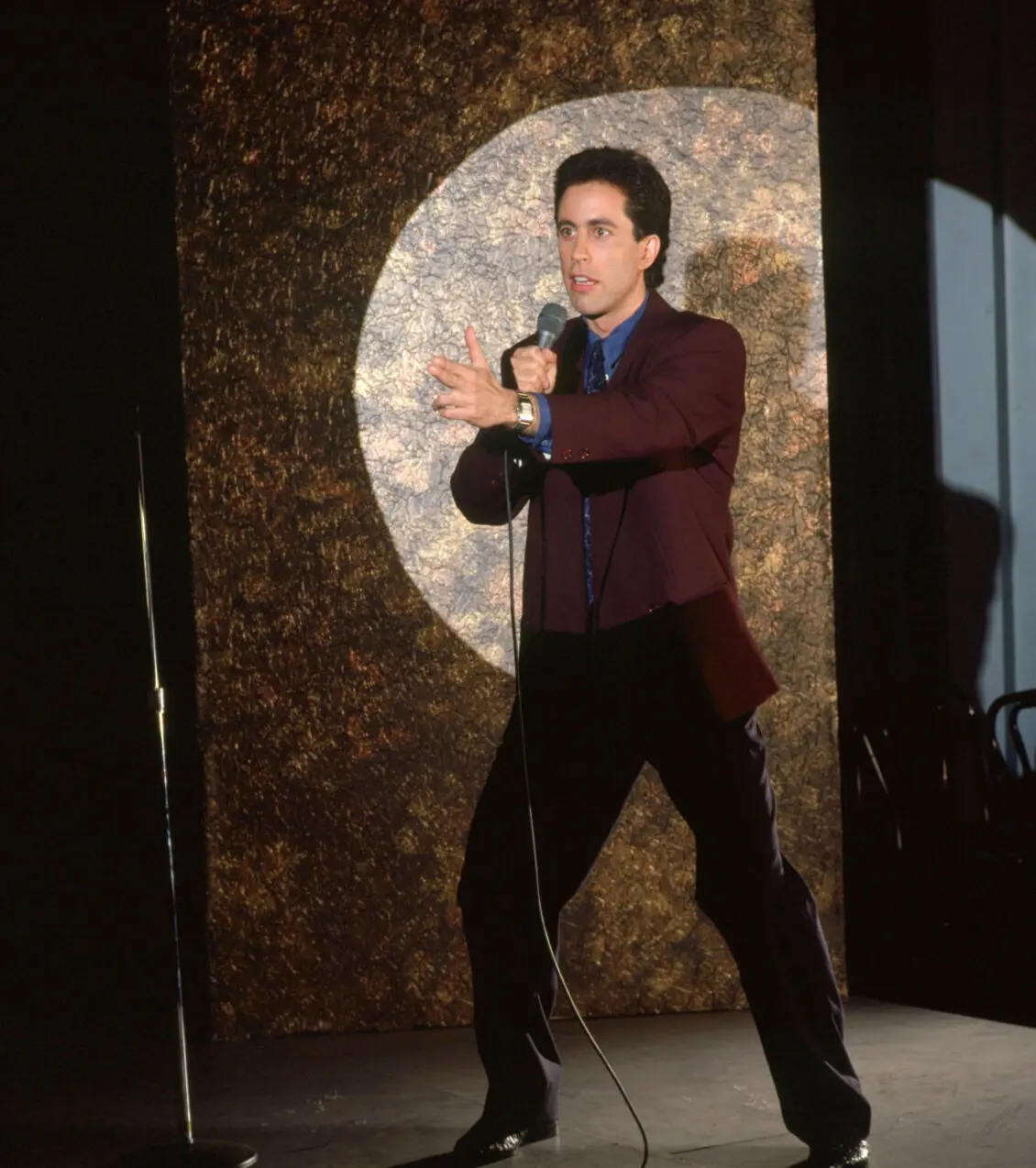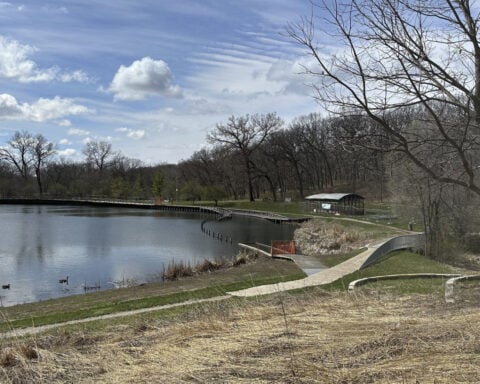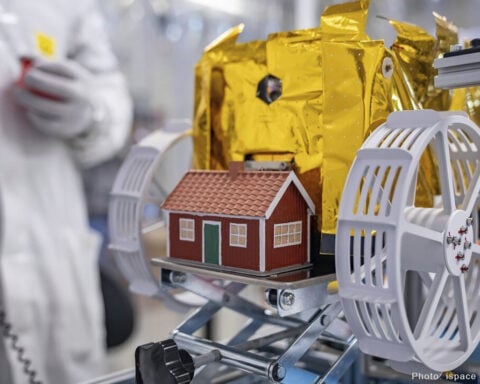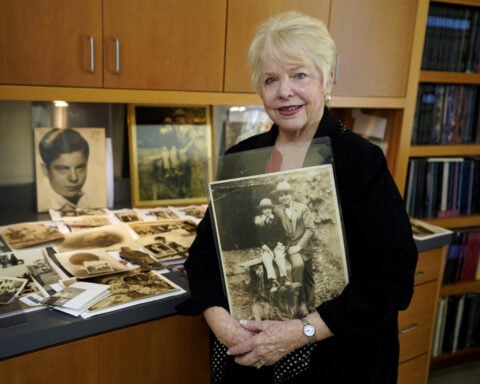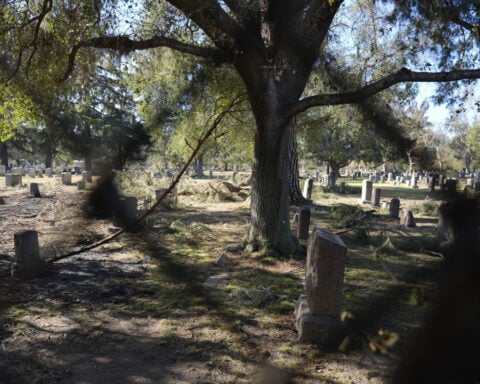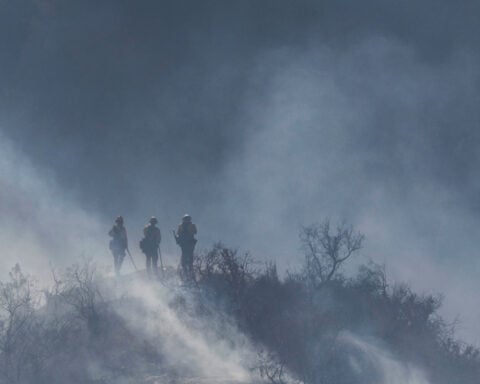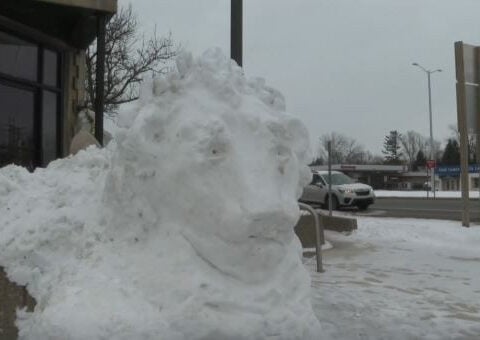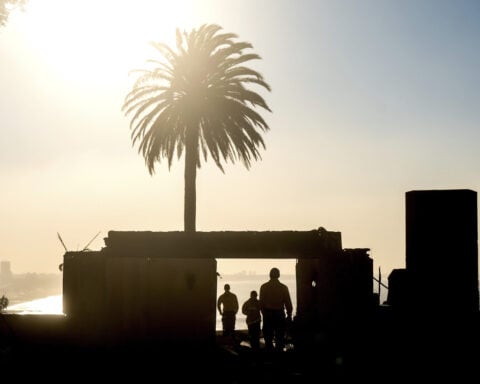(CNN) — A year ago, Lea’h Sampson felt like everything was crashing.
Though she had been doing stand-up comedy for six years, she was hitting a wall. Her jokes weren’t getting her booked, even in local comedy shows, and the feeling of defeat was settling in.
So when she got booked to do a show with Don’t Tell Comedy in Los Angeles, it was supposed to be her last. Sure, maybe she’d do a set here or there. But as far as pursuing stand-up full time? She was over it.
Then, Don’t Tell Comedy posted her full set on YouTube, along with a clip on TikTok, a minute-long bit about interracial dating. If you’re on the internet, you might have seen it. She starts with a bang: “Those of you who are into interracial dating, good for you. So was Thomas Jefferson.”
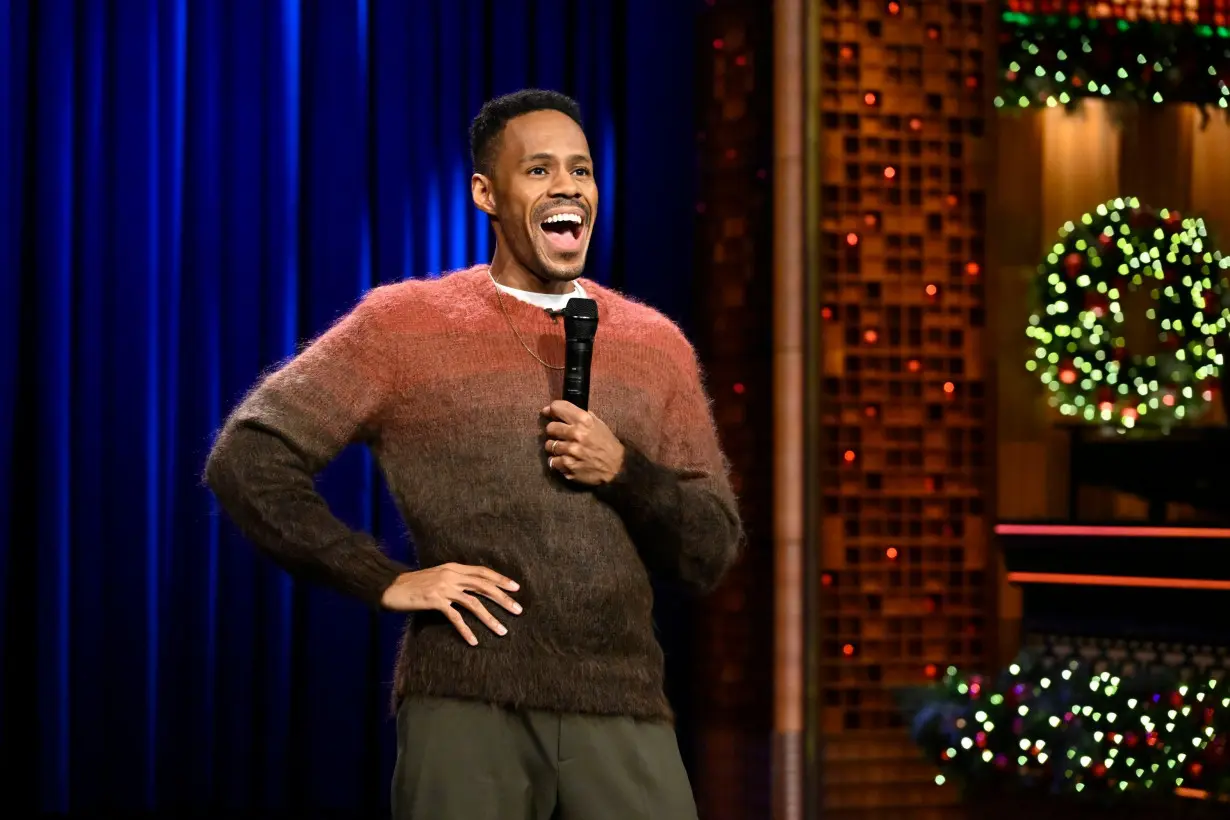
The crowd erupts, and she keeps them in the palm of her hand as she jokes about the differences in dating Black men (“I take my wig off in front of him, he’s like ‘Ooh, brr, it’s cold Little Bill’”) versus White men (“He’s like…’You could’ve told me that you have cancer’”).
That single TikTok video quickly blew up on the platform, bringing in upwards of 4 million views. Meanwhile, more than 800,000 people have seen the full 10-minute set on YouTube.
Overnight, her Instagram follower count doubled (now, she’s at 89,000). Her favorite reality stars left comments on the video. Comedy legends were sliding into her DMs. A few months later, she opened for Bill Burr at Madison Square Garden. She gets emotional talking about it now.
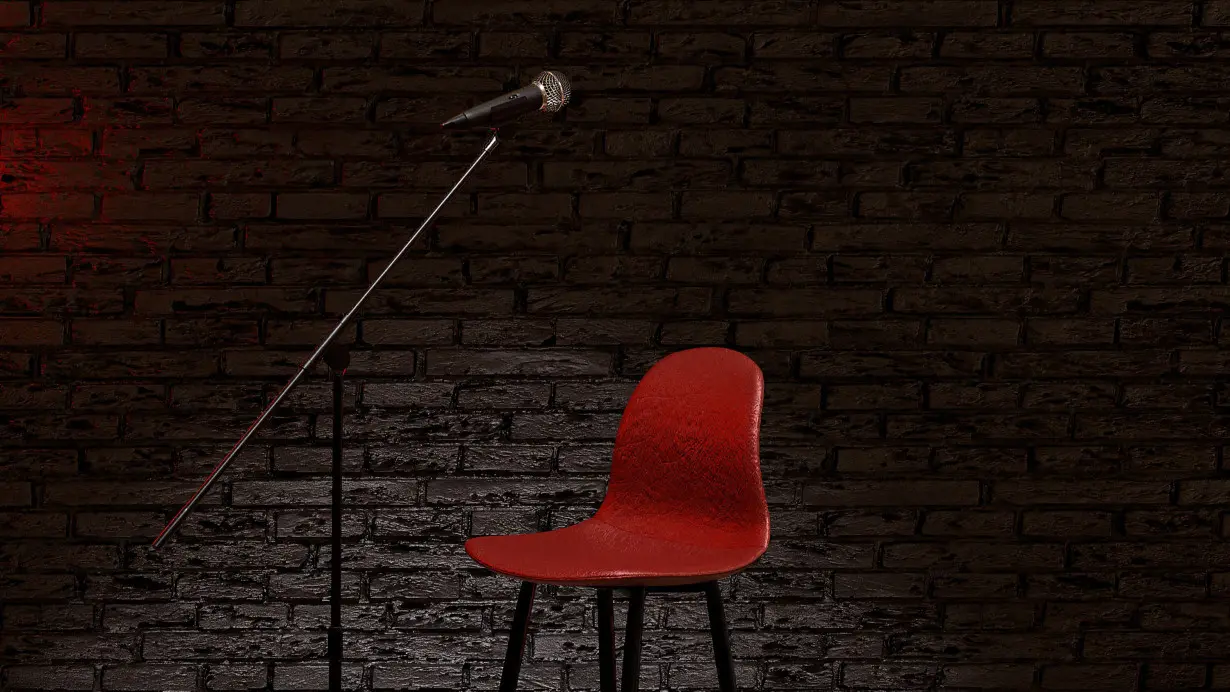
“I feel like I’ve always been a really good comic, a hard worker, and I just needed people to see me,” Sampson said. “And Don’t Tell did that for me.”
Don’t Tell Comedy is different from your average comedy show. Audiences don’t know the exact location until day of, or the lineup they’re going to see. There’s no drink minimum, which makes shows more affordable, and some events are even BYOB. And they’re popular: At a recent show in Atlanta, 149 people packed into a basement boxing gym to see seven local comedians perform.
For comics throughout the country, Don’t Tell creates more opportunities to perform outside of big city hubs. And, as Sampson can attest, Don’t Tell Comedy’s online presence is tremendous — with 5.2 million followers across YouTube, Instagram and TikTok.
Sampson is just one of dozens of comics who has found success through Don’t Tell Comedy. Since its start in 2017, comics say Don’t Tell has changed the comedy landscape for the better.
What is Don’t Tell Comedy?
One of the most influential things that Don’t Tell does, is actually quite simple: It gives comedians a platform, especially online.
Rather than hoping a clip posted on TikTok blows up, Don’t Tell gives comedians access to a built-in audience on social media, a rarity in today’s changing media landscape. One of its millions of followers might see someone’s clip, like it, follow the comedian, and later, buy tickets to their tour. When trying to build a fan base, that’s a huge win.
After all, it’s something of a weird moment for stand-up comedy. On one hand, while traditional industry pathways have shrunk, streaming services — most notably Netflix — have invested heavily in promoting and producing stand-up specials.
But the people who get opportunities on Netflix tend to be big names, said Don’t Tell founder and CEO Kyle Kazanjian-Amory. (These include comedians like John Mulaney, Dave Chapelle, or more recently, Joe Rogan, whose special premiered last month.) There’s a gap, one that Don’t Tell tries to fill, between mainstream comedians with big fan bases and those without.
“That’s the tough thing in comedy,” Kazanjian-Amory said. “You’re either living in a multimillion dollar house, or you’re scraping by to pay rent.”
That disparity wasn’t always the norm. Back in the 1980s, clubs were desperate for comedians to fill time slots in their venues. There were more spaces than comedians to fill them, said Jesse David Fox, a comedy critic and author of “Comedy Book.” That meant comedians could largely make a middle-class living doing stand-up in their own cities.
Eventually, some of those stars broke through, becoming names many of us still recognize, like Jerry Seinfeld or Ellen DeGeneres. But even if you weren’t a megastar, Fox said, that middle class lifestyle was still attainable.
A decade later, that 1980s comedy boom busted. In the 1990s, fewer venues meant there were fewer places for comedians to make money without already being famous. The definition of success changed: With a reduced path to the middle-class level of comedy, comedians hoped to build enough momentum to pitch a sitcom — à la Ray Romano or, later, Chris Rock.
This type of top-down level success continued into the 2000s. Comedy gatekeepers — like late night shows and Comedy Central — determined whether a comedian was funny enough to give them a platform, Fox said. Maybe they’d give a rising star a 10-minute set, then a half-hour special, then an hour, then maybe a development deal for a show. (Think Amy Schumer and Nick Kroll).
Now, in most cases, that whole pathway to make money has flipped. Comedians have to develop and nurture their fan bases through other avenues — like a popular podcast or newsletter — so fans will buy tickets to see them perform. Previous platforms have lost power; in their place is a more grassroots effort driven by social media like TikTok, Instagram reels and YouTube.
But the idea of a comedian having fans is a relatively recent one, Fox said. Sure, someone like Seinfeld could sell out arenas and have fans that will pay to see him perform. But for most working comics, they were just the name on the bill on a Friday night at the comedy club. Until now.
“All of it has allowed comedians of many levels to build fan bases,” Fox said. “And from those fan bases, you have a sustainable income because they’re your fans. It’s much more sustainable than the whims of certain gatekeepers.”
Comedians say Don’t Tell ‘set the bar’
Grace Johnson has been doing comedy since 2021. After meeting Kazanjian-Amory last year at the New York Comedy Festival, Don’t Tell Comedy produced and released her 10-minute special in June. While the special did give her a boost online, Johnson said that just having the credit was meaningful.
“Don’t Tell right now stands out as one of the premier places to go to for comedy, in the way that Comedy Central has been,” Johnson said. “Especially as someone who has been doing it for a shorter time than others, it’s been a really legitimizing thing.”
There are other tangible effects, too. Don’t Tell gives its comedians a “crisp, nice-looking video” that can then be used to apply to festivals or use in a reel, Johnson said. (To produce her set, there was a director of photography, six camera operators and a production designer.) These aren’t iPhone videos. These are high-quality, professional clips that will make others want to hire her, too.
Don’t Tell wants to democratize that access. The group doesn’t care how many Instagram followers you have, Kazanjian-Amory said. They just care if you’re funny. Scrolling through the feed, you’ll see comedians of all races, genders and so on. There’s no singular type of Don’t Tell comedian. Two comedians who recently went viral following the success of their sets, Susan Rice and Andy Huggins, are both in their 70s.
“That, I think, is the special secret sauce of Don’t Tell,” Johnson said. “It’s just like, ‘Is it good? Okay.’”
Now, Don’t Tell has become the go-to place to watch stand-up comedy, said comedian Jay Jurden, especially comics outside of the big names. Unlike other outlets, like TV or streaming, one could feasibly scroll for hours on TikTok, Instagram, or YouTube, continuously watching more and more stand-up.
While the full 10-minute sets are posted on YouTube, Don’t Tell populates its other social media with shorter, minute-long vertical videos with giant captions, like digestible comedy nuggets, which then brings eyes back to those longer sets (like Sampson’s viral TikTok). It’s a tactic that keeps people engaged, and exposes audiences to more comedy.
When it comes to these intangibles — diversity, audience engagement, and vertical integration — Jurden said “Don’t Tell really set the bar.”
Where does comedy go from here?
By creating another pathway for comedians to get noticed both on the internet and locally, Don’t Tell has effectively paved the way for more comedians to propel their careers. Objectively, that’s a good thing — earlier this year, Vulture called the enterprise “Comedy’s Benevolent Gatekeeper.”
Yet there are limits to the format. Don’t Tell’s online audience is huge, but it doesn’t necessarily control what goes viral and what doesn’t. It might give a variety of people a platform, but just by being online, the group still operates at the whims of the algorithm.
“If you look at what else works on YouTube, or what else works on Twitter, it’s not just ‘goodness becomes successful,’” Fox said. “It is the work that gets a certain reaction out of people. And that reaction might not actually give people the right type of fans.”
The concern, Fox said, is that it might shift comedy toward comedians who are louder, noisier, or more reactionary — the things that tend to do better on social media. Or, it could create audiences that expect the entire stand-up experience to be like an Instagram reel or a TikTok video.
None of that is Don’t Tell Comedy’s fault. That’s just the internet. But if that’s the way people consume so much stand-up, rather than seeing it in-person, it could become a worry.
Still, comedians need exposure, and Don’t Tell has the ability to introduce more people to new types of comedians, at differing levels. That also means more audiences watching stand-up in person, supporting touring comedians, and just supporting stand-up comedy as an entire ecosystem.
“Don’t Tell is going to help a lot of people find some of their new favorite comedians, whose careers they will help to continue to thrive over the next few years,” Jurden said. “To me, that is ultimately very good and work that should be celebrated and commended.”
In the case of Sampson, and many other comedians like her, that work was life-changing.
The-CNN-Wire
™ & © 2024 Cable News Network, Inc., a Warner Bros. Discovery Company. All rights reserved.

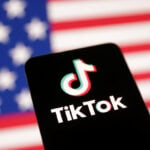 TikTok seeks to reassure U.S. employees ahead of Jan. 19 ban deadline
TikTok seeks to reassure U.S. employees ahead of Jan. 19 ban deadline
 US won't seek charges in unarmed Black motorist Ronald Greene's fatal 2019 arrest
US won't seek charges in unarmed Black motorist Ronald Greene's fatal 2019 arrest
 Euro zone households could increase consumption, ECB chief economist says
Euro zone households could increase consumption, ECB chief economist says
 Foreigners sold South Korean equities last month by most since early 2020
Foreigners sold South Korean equities last month by most since early 2020
 Trump and Biden national and homeland security staff will meet Wednesday for threat exercises
Trump and Biden national and homeland security staff will meet Wednesday for threat exercises
 As fires ravage Los Angeles, Tiger Woods isn't sure what will happen with Riviera tournament
As fires ravage Los Angeles, Tiger Woods isn't sure what will happen with Riviera tournament
 Antetokounmpo gets 50th career triple-double as Bucks win 130-115 to end Kings' 7-game win streak
Antetokounmpo gets 50th career triple-double as Bucks win 130-115 to end Kings' 7-game win streak
 No 97 Laura Siegemund upsets Olympic champion Zheng Qinwen at the Australian Open
No 97 Laura Siegemund upsets Olympic champion Zheng Qinwen at the Australian Open
